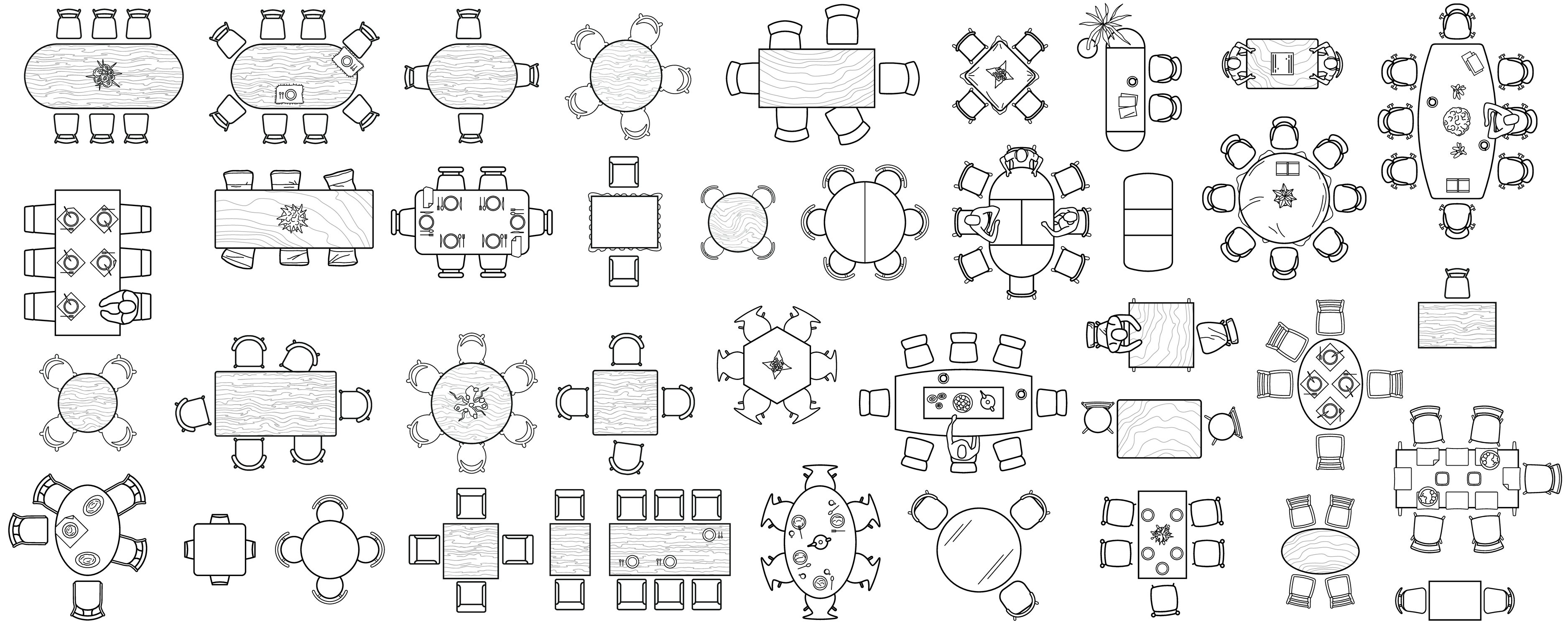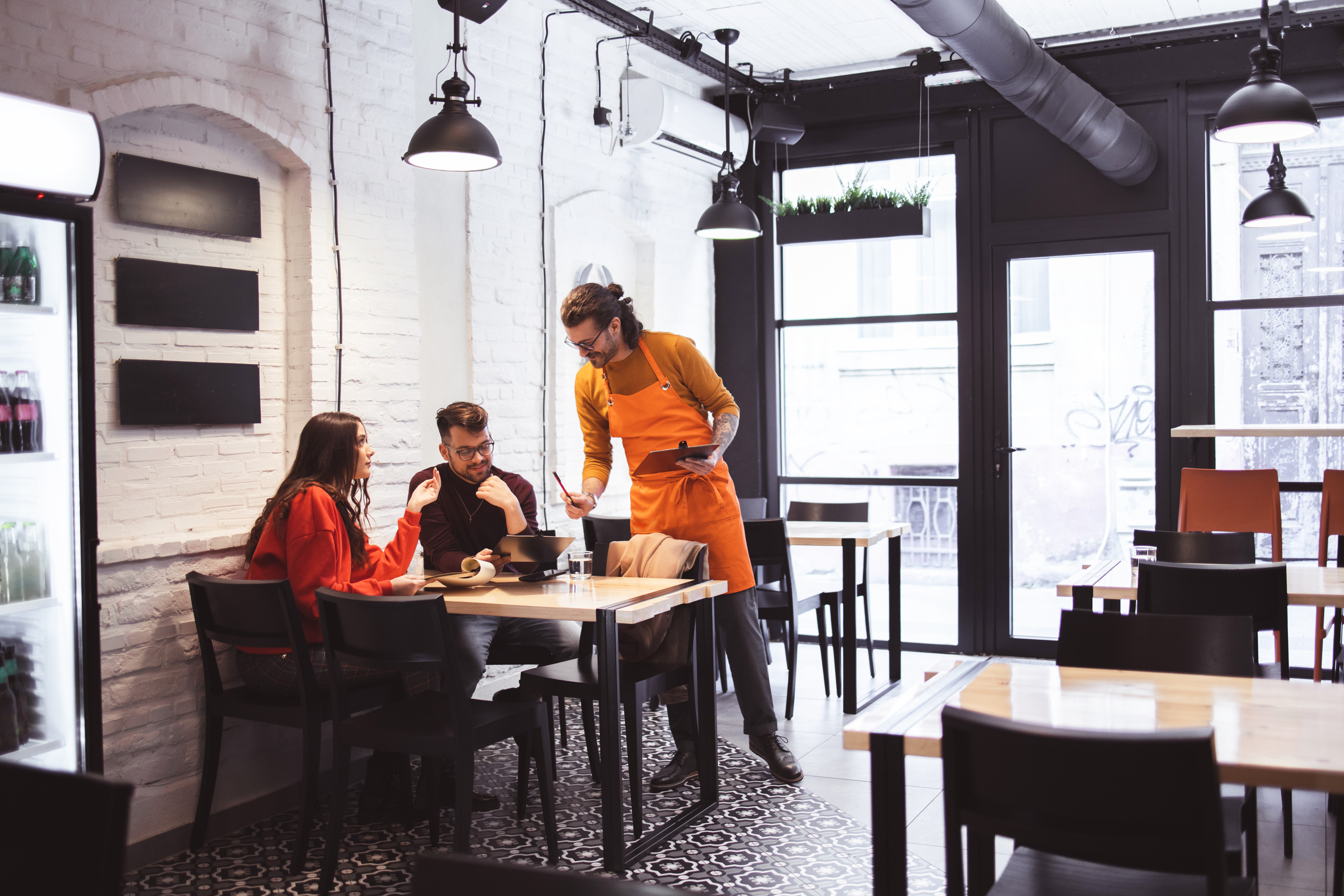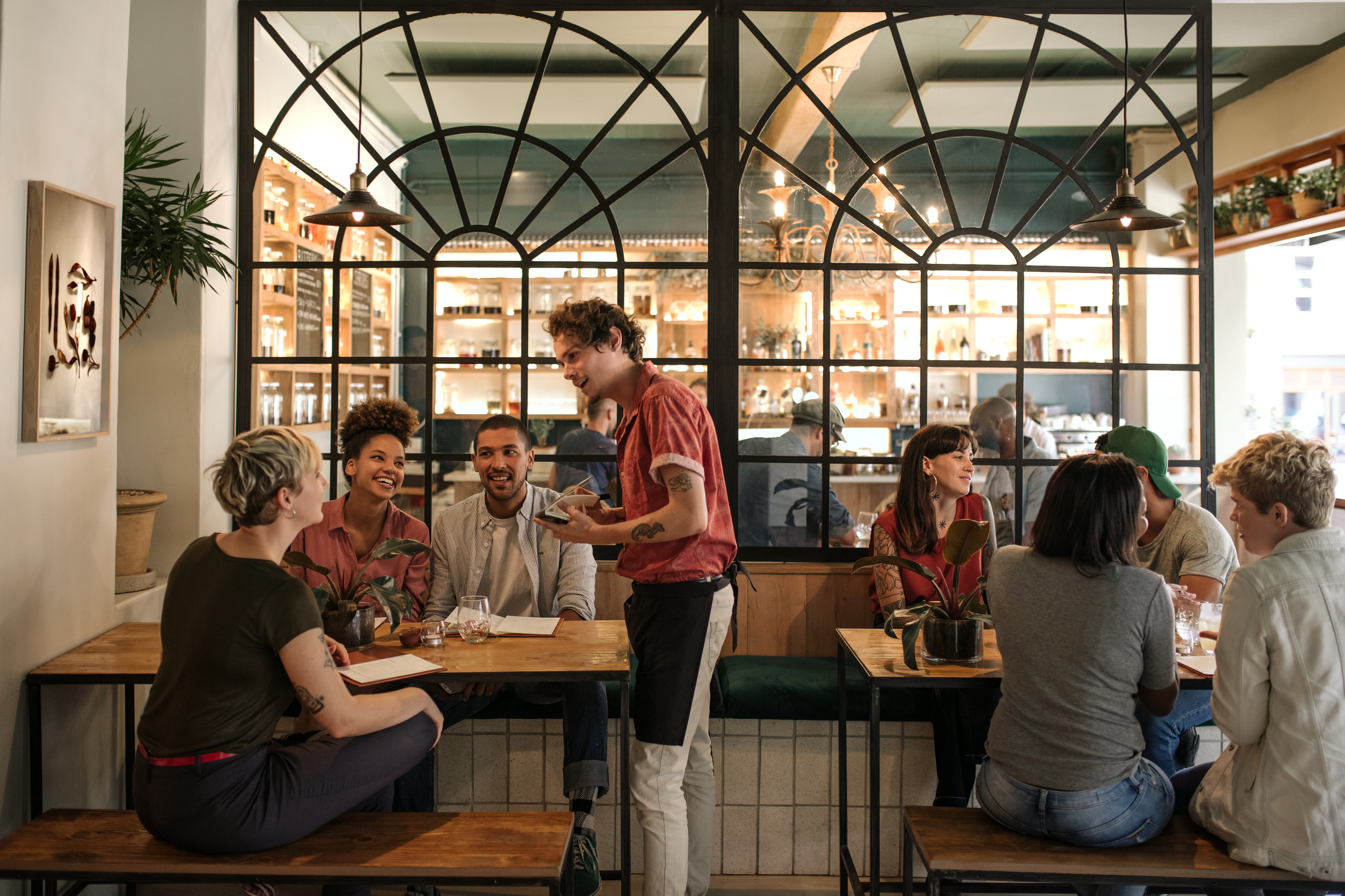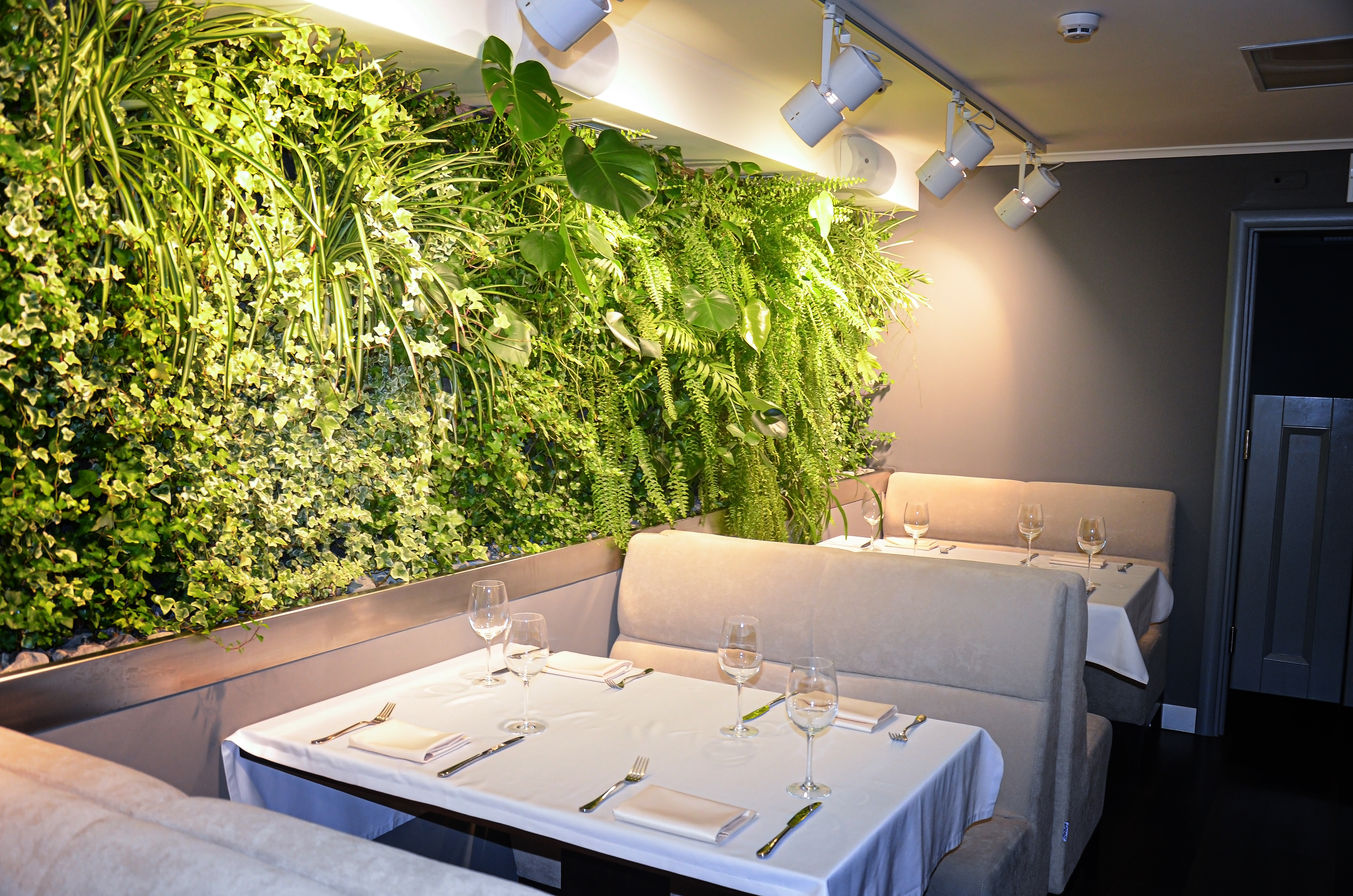Why Space is an Essential Element in the Customer Journey in a Restaurant

If you want a successful restaurant, you need to ensure that your customers have a satisfactory and enjoyable customer experience during their visit, from way before their arrival to long after they leave.
To do this, you need to ensure that they have good interactions with your restaurant and staff when going through the steps of the customer journey. One of the more important aspects of this journey is the space plan and layout of your restaurant – which is the focus of our article today.
Here, we explore why space is an essential element in the customer journey when dining in a restaurant.
What is the Customer Journey?
The customer journey refers to the steps, touchpoints or interactions a customer has with your company, from their arrival to departure.
Typically, the customer journey can be mapped out in 9 stages when visiting a restaurant. These are:
-
Awareness: This is how customers discover you via the marketing you have in place. Typically, restaurants are found through social media channels, such as Facebook, Instagram and Twitter, or review-based apps like TripAdvisor and Yelp.
-
Research: Before visiting your restaurant, customers will conduct research by reading reviews, viewing your website, and looking through your social media pages. What they find during their research will influence how they perceive your brand. If you don’t make a good impression, potential customers won’t bother giving your restaurant a try.
-
Arrival: It might not seem important, but the arrival of your customer’s before entering your restaurant is just as important as any other stage in the journey. Is your restaurant easy to find? Is there plenty of parking? Do customers have to walk far if arriving by public transportation? These are just a few bases you need to have covered if you want diners to have a good experience and return.
-
Placing orders: How long does it take for your customers to place their order on average? And how long do your servers wait before checking if the customer is ready to put in their meal order? Calculate the ordering time.
-
Wait time: This stage requires you to be aware of the length of time it takes to cook and prepare meals, as well as how long it takes to get from the kitchen to the table. Also, is your staff friendly, helpful and efficient when interacting with customers?
-
Dining in: This stage refers to sit-down customers and how they feel about the service and atmosphere, as well as their length of stay in your restaurant.
-
Payment: Here, you should calculate and be aware of the time for payment. How long does it take for servers to deliver the bill and receive payment from customers?
-
Review: Many customers take to social media and review sites, like Google reviews and Yelp, to voice their satisfaction or lack thereof when dining at an establishment. Be sure to keep up-to-date with all reviews on your restaurant and use the feedback to your advantage.
-
Return: Audit the comeback rate to gauge how many returning customers you visiting your restaurant.
In today’s competitive climate, understanding and addressing your customers’ pain points by creating a seamless and enjoyable customer experience can go a long way to cultivating brand-loving advocates and extending your restaurant’s customer lifecycle.
For clarification, the customer journey is not to be confused with customer experience – which is the way a customer interacts with your company at all stages of the customer journey. A customer’s experience at your restaurant is largely influenced by each step of the customer journey.
Therefore, you must have a detailed customer journey map to thoroughly analyse and remedy any points of frustration that may negatively impact a customer’s experience when interacting with your restaurant.

Why does space play an important role in restaurants?
We’ve established that to have a good customer experience you need an effective customer journey map in place. The customer journey map, however, has many moving parts, each of which needs to be optimally functional for positive customer interactions. Space planning is one of these moving parts.
Space planning is the process of analysing how space in structures and rooms will be used. Good space planning considers possible space uses and ensures that they are used efficiently. The process then results in a space plan, a drawing that identifies the needs and required elements of spaces.
Ideal space planning can bring in a sense of balance between beauty and comfort, from the kitchen to the dining area, and integrates everything in the room well, ensuring harmony in the restaurant for staff and guests.
Therefore, a good space plan will make for an effective customer journey map, which in turn, will create a satisfactory and enjoyable customer experience. Here are a few reasons how:
-
Circulation and movement
Proper circulation and movement around the restaurant are essential for both employees and customers. The layout of the space should be easy to navigate and have enough room for people to walk around comfortably. The last thing you want is servers spilling food and drinks or guests hurting themselves because they’ve bumped into chairs due to lack of space between tables.
Therefore, drafting an effective space plan will ensure that the layout of your restaurant offers optimal circulation and movement for all those in the space.
-
Connectivity between frontend and backend
Efficiency and functionality are two key factors of an effective space plan. When your layout is planned out properly, staff can navigate the space quickly and serve food and drinks with little hassle.
The same goes for the kitchen. Implementing an effective space plan in the kitchen of your restaurant will allow employees to navigate the space efficiently and with little to no delays when cooking and preparing guests’ meals.
To achieve this level of efficiency, the spatial arrangement in your restaurant’s layout needs to ensure connectivity between the frontend (dining and bar area) and the backend (kitchen and storage). The space plan will allow for smooth circulation between the two areas and optimise efficiency.
This means that guests will receive their orders quickly, while the drinks are still cold and food is still warm, which will ultimately contribute to a positive customer experience.
-
Diners and staff comfort
Even before social distancing measures came into effect, customers wanted space between themselves and the next table, so they could have a modicum of privacy. Today, as a result of the pandemic, restaurants have no choice but to ensure appropriate spacing between tables, so guests feel more comfortable.
An effective space plan is just as important for the comfort of your employees as it is for customers. If your servers aren’t comfortable in the space, it may cause them to provide poor service, which will affect the customer experience.
So, keep both parties happy by ensuring your restaurant has a layout that provides comfort.
-
Optimal utilisation of space
Optimising the use of space in a restaurant is extremely important, as you want to fit in as many tables and chairs as possible, but you still want the dining area to be comfortable and functional. It is a fine line to walk, but as always, with an effective space plan, you can accommodate the maximum number of diners with enough space for work, movement and social distancing.
-
Safety
Besides enforcing social distancing measures, an effective space plan also provides other safety benefits, like creating clear pathways to exits in the case of an emergency where staff and guests need to evacuate the building.
In addition, wider paths and more space between tables will ensure that customers and employees avoid tripping or bumping into things as they navigate the restaurant, reducing accidents and preventable injuries.
Need help crafting the perfect space plan for your restaurant?
As you can see, having a suitable space plan in place plays a role in the success of your business by contributing to an effective customer journey and, thereby, aiding a positive customer experience.
The best way to achieve a successful space plan is to leave it to the professionals who know exactly what they’re doing – and you came to the right place to find the perfect specialist for your project.
Contractors.Direct offers a curated database of thoroughly vetted, quality fit out contractors, interior designers and interior architects who can bring your vision to life, on time and on budget. Get in touch with us and we’ll be happy to connect you with the right people for the job.

Written by Kirsten Delcie
As a seasoned project professional, Kirsten has been curating and creating content for Contractors Direct since the company's inception. Her diligent research methods and style lend themselves to the valuable insight driven blog posts you see here. Outside of content creation Kirsten is an avid reader and scuba diver and combines both as often as possible!
Ready for a Stunning New Space?
Dream for a new look for your space? Make an appointment today for the perfect contractor for you. We'll work with you to make your vision a reality.
Related Posts

6 Elements of Restaurant Interior Design & How They Influence Customers | Contractors Direct
The psychology behind interior design is a fascinating topic that many studies...
.webp)
Jaw-dropping Restaurant Interior Fit-outs Creating Unforgettable Dining Experiences in Dubai
Dubai has a vibrant and fiercely competitive culinary landscape. And, if you...

